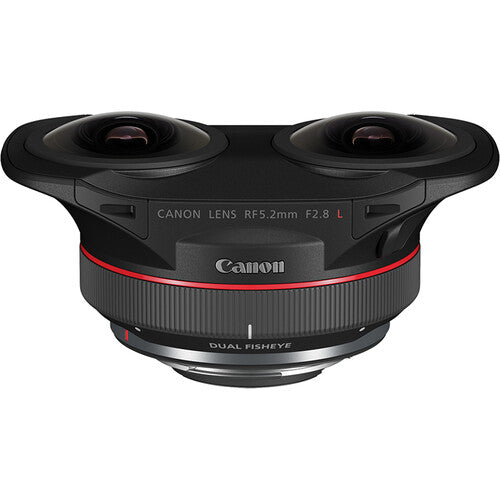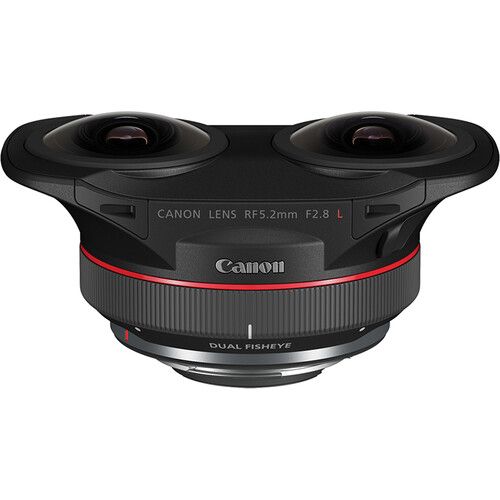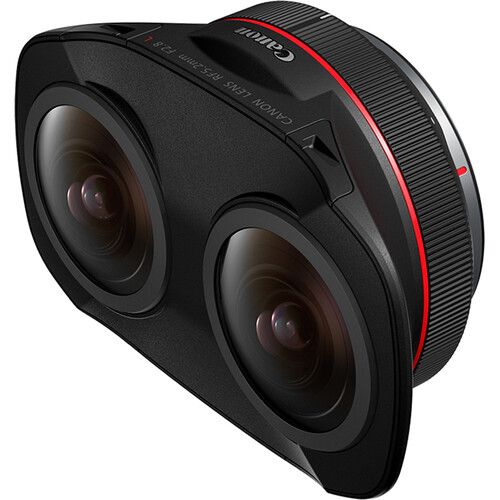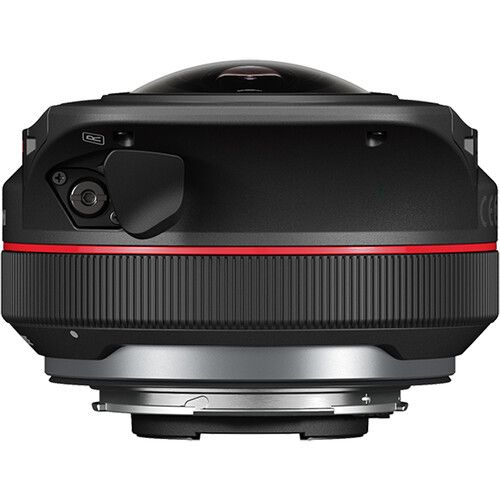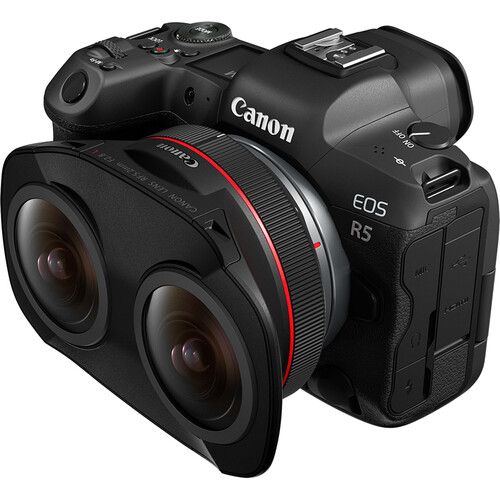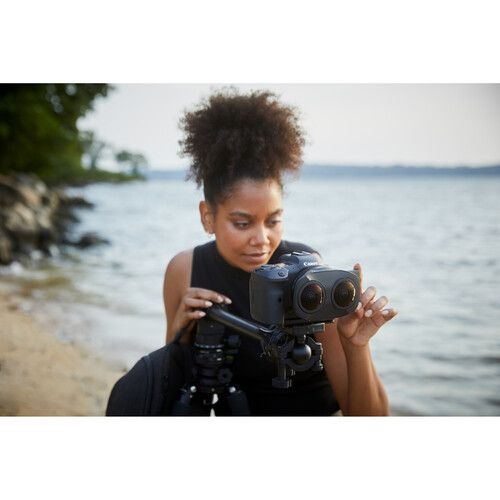Canon Promotion - Lens Reward & Student Cashback

Canon Lens Reward Promotion & Student Cashback
Buy any of the eligible Canon EOS R System cameras to qualify for cashback on a huge selection of Canon RF Lenses. Please visit http://www.canon.co.uk/lens-reward for more information on this promotion. Offer valid from the 1st September 2023 until the 31st August 2024. Students can also claim cashback on selected Canon cameras, lenses and printers with our Student Cashback offer. This offer is valid from the 1st September 2023 until the 31st May 2024.
Product Description
Canon RF 5.2mm f2.8L Dual Fisheye 3D VR Lens
- Dual fisheye lens
- 190° field-of-view
- 60mm baseline length
- F2.8 aperture
- UD elements and SWC coatings
- Dual EMD units
- L-series quality
- Designed and built to perform in demanding conditions
- Built-in rear gelatin filter holder
Unlock new dimensions in visual storytelling with the RF 5.2mm f2.8L Dual Fisheye 3D VR from Canon. Currently compatible with the EOS R5 Mirrorless Digital Camera, this L-series lens is the world's first digital interchangeable lens that can capture stereoscopic 3D 180° VR imagery to a single image sensor. The dual high-performance L-series fisheye lenses combine imagery onto a single image sensor delivering impressive results to a single file. This helps simplify your workflow by eliminating the need to sync and stitch multiple video files. Creators can go from traditional stills or video shooting to stereoscopic 3D capture with a simple lens swap, and the pairing of this lens with the EOS R5 provides for high resolution video recording at up to DCI 8K 30fps and DCI 4K 60 fps.
3D 180° VR Capture
Designed for use with the Canon EOS R5 Mirrorless Digital Camera, this lens gives you the ability to create an immersive 3D experience. When captured imagery is viewed on compatible head mount displays such as the Oculus Quest 2 and more, a viewer can feel like they are a part of the story that you create. With stereoscopic 3D 180° VR, your audience can see life-like depth and can move their head to look around the viewing environment. The lens features a beautifully engineered and optimized folded optical design, with separate left and right optical systems. This enables you to capture stereoscopic 3D imagery with a 180° field of view to a single full-frame image sensor.
VR with Ease
Pairing this one lens with an EOS R5 camera provides you with the ability to deliver a single file. This lets you create a powerful and convenient solution compared to traditional VR systems that capture a 3D scene with two separate fisheye lenses, recorded to two separate cameras, which write two separate files. This saves you time and effort behind the camera and in post-production by helping to solve issues such as multi-camera positioning, multi-lens syncing, image stitching, audio syncing, encoding, and more.
Stereoscopic 3D Imagery
Featuring dual 5.2mm fisheye lenses positioned with 60mm of spacing between left and right lens centres, this lens provides an interpupillary distance closely resembling human vision. This provides for a powerful and immersive experience that brings the viewer to feel as if they are within the scene where the video or stills image takes place. Also, this lets the viewer change their viewing angle within a recorded scene so they can look around with the use of a compatible head mount display.
Dual-Synchronized Electro-Magnetic Diaphragm
Each of the left and right fisheye lenses has its own optical system, including separate but coordinated aperture mechanisms. Together they seamlessly and simultaneously control the exposure of both lenses, so setting your aperture is the same process as with any other RF lenses.
L-Series Lens Elements
Engineered with 12 elements in 10 groups and highlighted by two ultra-low dispersion glass elements and prisms in both the left and right lenses, this lens delivers impressive colour and clarity with minimal chromatic aberration.
Subwavelength Structure Coating (SSC)
SWC technology decreases ghosting and reflections that may occur when shooting in more challenging lighting conditions such as during strong backlight, providing versatility and more uniform colour balance in the scene.
Manual Focusing
Coordinated manual focusing of both lenses allows you to focus each lens using the manual focus ring. Additionally, a left-right focus adjustment dial lets you refine the focus of the right lens separately from the left lens by using the included hexagon wrench.
Large Aperture
Providing a highly adaptable aperture range, the RF 5.2mm f2.8L Dual Fisheye 3D VR lens allows you to go from a bright f/2.8 aperture in low light shooting to a deep depth of field of f16 for more control of your exposure in brighter environments. Additionally, a gelatin filter holder is located at the rear of the lens allowing optional gel filters to be used similarly to previous ultra wide-angle Canon lens offerings.
Compact, Lightweight, and Portable
Thanks to the RF mount and the folded optical design, the size and weight of this lens make it easy to use in tight spaces and easy to carry in a camera bag. The lens weighs under 1 lb and is just slightly over 2" in depth from the rear mount to the front side of the lens, creating a compact, portable, and lightweight solution.
Dust- and Water-Resistant Sealing with Fluorine Coating
Built to L-series lens specifications, the lens features a highly durable RF mount design. With dust- and water-resistant sealing, you can confidently shoot in challenging weather conditions. Fluorine coating is used on the front element to help prevent water, oil, and other surface residues like fingerprints from sticking to the lens, and this also facilitates quick and easy wiping without the use of solvents.
For full specifications click Here
Payment & Security
Your payment information is processed securely. We do not store credit card details nor have access to your credit card information.

